Story by Steve St. Angelo | Illustration by Laurent Hrybyk
Researchers find interventions that work in a city that truly needs them and let the wind—and word of mouth—carry them farther afield
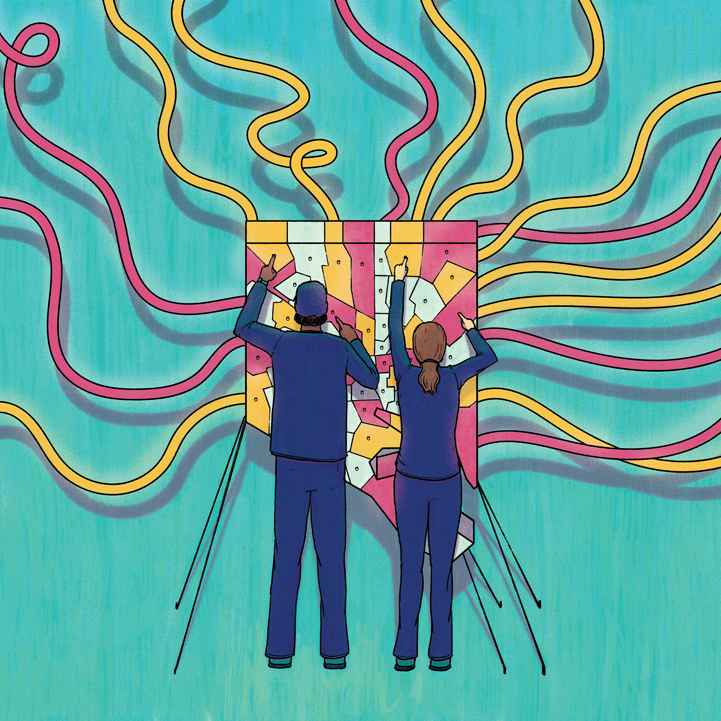
You could think of health care in Baltimore as the flap of a butterfly’s wings, with the city’s streets, clinics, hospitals, and research centers the cocoon where a metamorphosis is constantly occurring that will one day change the world. Of course, this “butterfly effect”—a tenet of chaos theory that suggests the flap of an insect’s wings might lead eventually to a windstorm across the planet—has nothing to do with randomness.
With data, experience, creativity, and best practices firmly in tow, researchers from the Johns Hopkins School of Nursing—with peers in medicine, public health, social work, and number crunching—use Baltimore’s diversity of race and ethnicity, socioeconomics, geography, and health risk factors to develop interventions that work here and, with a little tweaking, anywhere.
“Some of the same issues we’re seeing abroad clearly impact communities here—issues of access, stigma, medical mistrust,” explains Derek Dangerfield, PhD, a postdoctoral scholar with the REACH Initiative at the Johns Hopkins School of Nursing (JHSON). “All those things we go abroad to study we can intervene on right here working with the Baltimore City Health Department. And we need to.”
Dangerfield grew up in the Baltimore of the 1990s, a time when the tide began to turn in HIV/AIDS research among white patients yet “the resources weren’t there” for impoverished black communities. This left them vulnerable, and thus not surprisingly these communities are where, in the United States, the scourge remains most deadly today. In Baltimore, that means reaching and safeguarding those at risk, and ending the stigma attached to the disease.
Fix it here, Dangerfield insists, and the solutions will find their way abroad. And the way to begin is community nursing, which is why Dangerfield, a Fulbright Scholar with a degree in sociology from Georgetown University and a PhD in health behavior research from the medical school of the University of Southern California, is back in Baltimore (see sidebar below). And it’s the reason he chose the School of Nursing as a perfect landing spot.
“Some of the same issues we’re seeing abroad clearly impact communities here… All those things we go abroad to study we can intervene on right here working with the Baltimore City Health Department. And we need to.”
“I think nursing was a logical transition for me. Nurses are touching the people,” he says. Working with them gives the non-nurse researcher valuable, direct insights. “And I love teaching nursing students.”
Dangerfield is building an elective course, Sexual Health Disparities, that he hopes to bring in the next year or so to the Master of Science in Nursing (MSN) Entry Into Nursing and doctoral programs.
And he has a rare perspective on his HIV research—on the risks and behaviors of men who have sex with men—in Baltimore and beyond. “A lot of the investigators who do this kind of work, they’re not really part of the community they study, doing international research on ethnic or sexual minorities. I’m just … everything. The work I do is real life for me. The life I save just might be my own.”
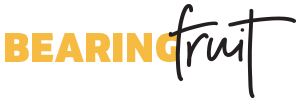
CAPABLE has become the viral video of the community intervention world.
Shorthand for Community Aging in Place: Advancing Better Living for Elders, CAPABLE is led by Sarah Szanton, PhD, ANP, FAAN, who has guided its expansion from Baltimore’s impoverished neighborhoods to 17 cities in 10 states and, with its introduction in eastern Australia, beyond U.S. borders. CAPABLE combines home visits from a nurse, occupational therapist, and handyman to equip low-income older adults to live more comfortably in their homes for longer. Small improvements like handrails and lowered shelves or microwaves combined with addressing pain and finding new strategies for performing normal functions offer greater freedom, safety, and quality
of life to participants.
Results show that CAPABLE improves self-care of participants and decreases disability and depression while saving thousands and thousands of dollars in costs to Medicaid and Medicare.
“It’s common sense, applied methodically,” Szanton is fond of saying. She was recently designated an American Academy of Nursing Edge Runner for her innovative approaches to aging care (See P. 07). And like so many of its participants, CAPABLE shows no signs of slowing down.
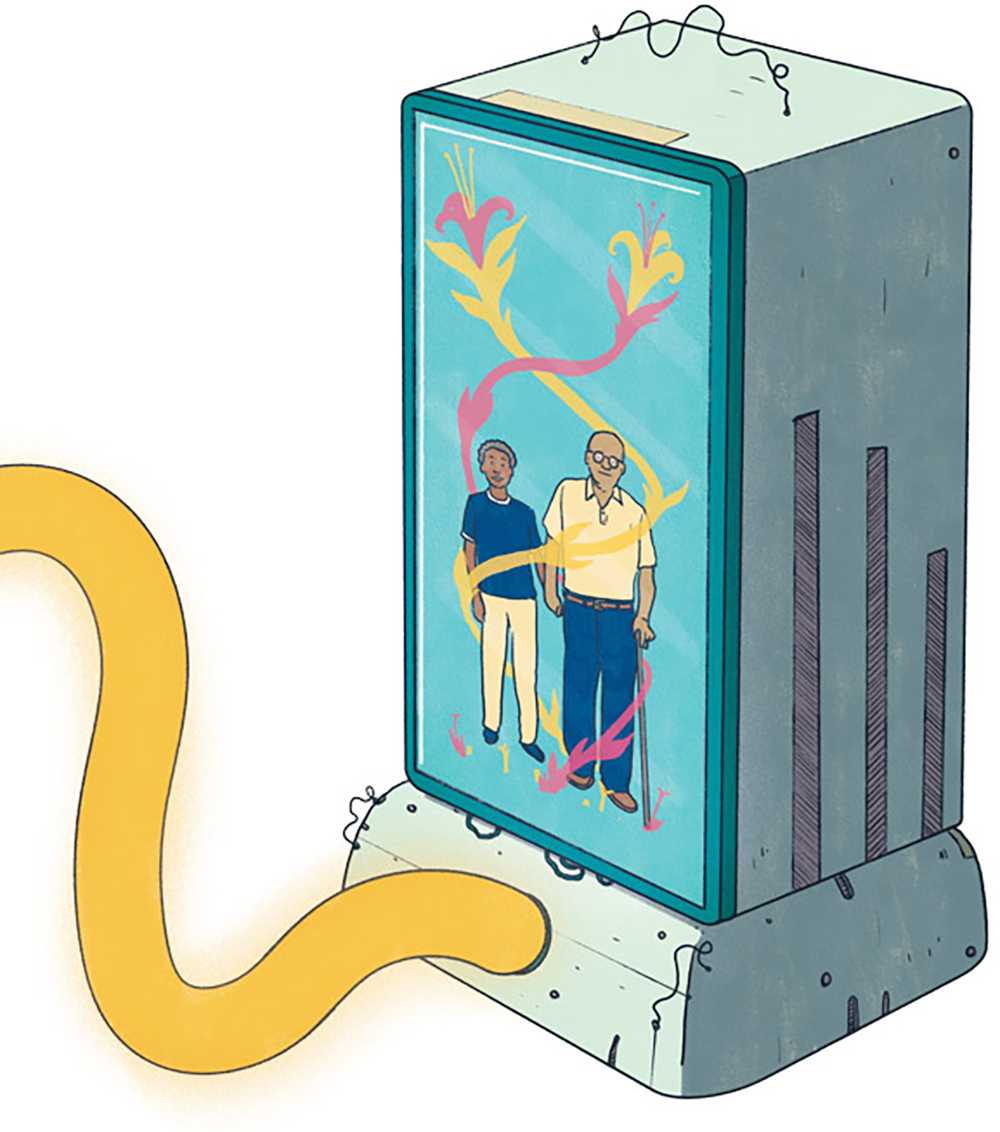
“Our Australian colleagues have added a cognitive training component. We are learning from them. Each new site has something to teach us about adaptation,” Szanton says.
“Nothing ever happens from one person’s brain,” she adds, explaining that her big idea was to add the nurse and handyman to an existing program called ABLE. That program, says Szanton, director of JHSON’s Center for Innovative Care in Aging, was the brainchild of her predecessor, Laura Gitlin, PhD.
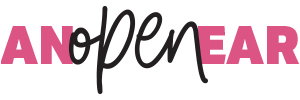
“All health research, from the beginning of the idea all the way through to the end, has to move toward translation, to sustainability,” says Assistant Professor Bryan Hansen, PhD, RN, APRN-CNS, ACNS-BC. “The pipeline for research has been traditionally so long from the inception of an idea to putting it out into clinical practice. So many ideas never get there.”
Hansen has been serving as a liaison between the Johns Hopkins Hospital, the School of Nursing, and Howard County General Hospital in Columbia, MD, on delirium prevention and treatment. “And one of the key parts to this translation idea is that you have people working together who are both in the clinical environment and coming from the research to think about how to do these things in a way that is necessary for translation and sustainability.”
“There are so many things that they’re doing [at Howard County] where we have resources that could supplement them. And we’re doing things here where it would be great to have staff connections with them.” Such partnerships have become a bedrock of the affiliation between hospitals—Johns Hopkins, Howard County, Suburban, Sibley, Johns Hopkins Bayview, and All Children’s in Florida—of the Johns Hopkins Medical Institutions.
“This is the beginning of a lot of different things because Howard County has an interest in—and we do as well—of having our DNP students be there and working on areas of joint priority between us. So it’s a great opportunity for them to have additional input and future leaders working on these things in the hospital. At the same time, it’s a great opportunity for us to have a connection with a community hospital that has a lot to offer to our students.”

For researchers, collaborations bring a bigger pool of nurses eager to learn and assist, plus a big increase in the number of potential community participants for a particular study. “This partnership back and forth is really a way to advance that.”
Hansen keeps an ear to the international research as well. There’s an International Delirium Society, for example. “There’s a lot of crossover in the sense that not only do other places need this but that other places lead us in this, so we draw a lot from international work. Why spin my wheels here when I can use somebody else’s ideas to collaborate with them?”
Some of international translation is literal. Sometimes it’s just agreeing on a particular measuring tool. “There’s an instrument we use a lot in the United States to assess delirium called the CAM, for Confusion Assessment Method. In Europe, a lot of people are using something called the ‘4AT.’ Both are great measures.” But they’re different. “It’s just getting together with [international] researchers … maybe we use both, or one or the other,” so there’s no apples-and-oranges disconnect.
And when an intervention is headed overseas, Hansen explains, “It’s important to culturally tailor it. So even if we find something that works well in the U.S. … it’s not a matter of simply rolling it out exactly how it was envisioned in whatever setting. Every place is unique—even between Johns Hopkins Hospital and Howard County. A lot of things that would work here wouldn’t work there, and the same is true internationally. You need to be very sensitive to the individual needs of the systems you’re working in, the countries you’re working in, the communities you’re working in, the needs of the patients and the care providers.”

That sensitivity to the needs of the Baltimore community is represented by researchers like
Derek Dangerfield and, through a new Johns Hopkins School of Nursing program, Baltimore Talent Scholars Tameka Cottman, Damon Bennett, Kadidra Wimberly, and Zoe Rush.
The program seeks graduates of the Baltimore city schools system with an interest in health care for spots in a Master’s in Nursing (MSN) Entry Into Nursing cohort. Baltimore Talent Scholars finds people who care about the city and helps them learn to care for their communities. Of course, the nursing education these scholars receive comes without limits, and will take them anywhere they want to
go. But it all starts here.
“Being a nurse means empathy. You have to show your patient that you’re not in their shoes but you can feel what they’re going through. You have to show them that you’re there with them.”
“I’m the fourth generation of nurses in my family. I will be, however, the first nurse in my family to receive a master’s degree,” says Cottman. “I’ve always known that I was interested in how the body heals … nursing is where I really want to be because I am interested in helping patients heal at the bedside.” She adds an interest in working with the homeless population and becoming a doula to teenage mothers in Baltimore.
“Being a nurse means empathy,” says Bennett. “You have to show your patient that you’re not in their shoes but you can feel what they’re going through. You have to show them that you’re there with them.”
He sees psychiatric nursing as a way to make a great impact: “As we can see on the news every day, a patient who’s suffering from mental illness who had a relapse maybe … as nurses, we’ll be on the front line to say: We care about you.”
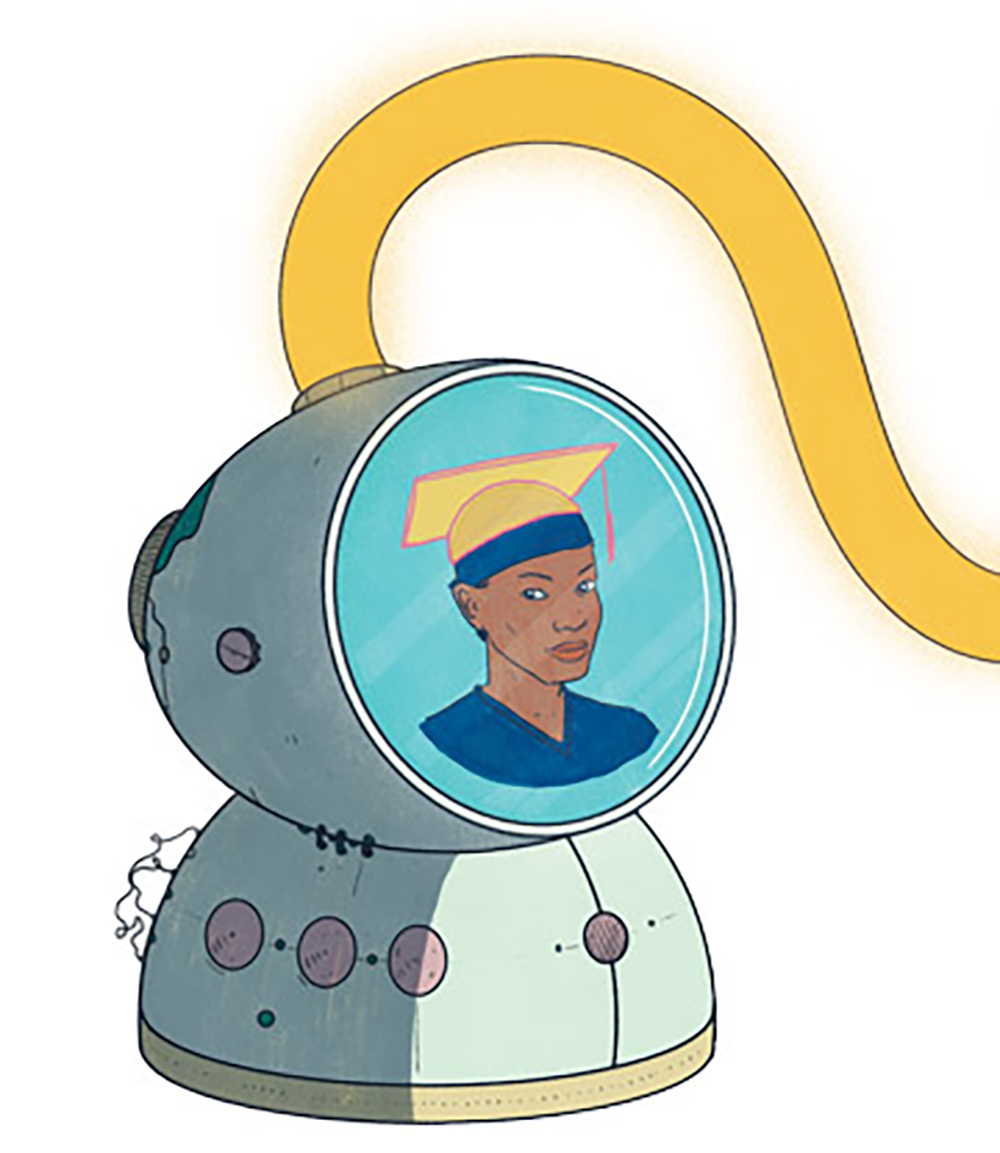
The experience has broadened the scholars’ horizons and even, as Rush explains, blown their minds a bit. “Nurses have to have an extraordinary amount of knowledge … I did not appreciate how much a nurse is at the center of complicated facets of patients’ medical needs.” And Rush, who hopes to work in aging care, is ready to be a cheerleader and mentor to Baltimore Talents Scholars who follow in her footsteps. “There are people in this city who are motivated and will make an extraordinary contribution, and Hopkins will have everything to do with the contribution that they can make.”

Derek Dangerfield, PhD, doesn’t like to look too far down the road, though in some ways he’s been there. The East Baltimore native, who’s studied HIV and sexual inequities from Southeast Asia to South Africa to Southern California and now back to East Baltimore, won’t predict where the research is headed. He’ll know it when he gets there.
“My vision is, I try not to have a vision,” says Dangerfield, who explains that he borrowed the approach of a mentor. “Just follow the needs of the epidemic, of the people. Your work will do the rest.”
So far, his journey has taken him from Baltimore City College to Georgetown University for a bachelor’s degree in sociology; to a Fulbright Scholarship to study risk behaviors of men who have sex with men in Kuala Lumpur, Malaysia; to the University of Southern California for a PhD; and to postdoctoral work in HIV prevention with Associate Professor Jason Farley, PhD, MPH, ANP-BC, and the REACH Institute of the Johns Hopkins School of Nursing.

Photo by Chris Hartlove
Dangerfield still wears his high school ring, which is very Baltimore. “It’s the thing here,” he says, explaining that in Charm City, your high school of record tells other natives all they need—or even want—to know about you. And while on a late-winter day he was missing the Pacific Coast, that ring does let you know everything you need to about Dangerfield’s decision to come back home.
“I’m really proud that I can do this work in a global setting, like, ‘Wow. You’re an African-American man from East Baltimore and now you get to do research in Southeast Asia with the rock stars of public health nursing.” But, “It’s not home. Los Angeles isn’t home,” adds Dangerfield, who lives in Charles Village. “My grandmother and my parents are still here. I remember that this is home when they call and invite me to dinner after work.”
***
When last we chatted with Brittany Kelly, RN, she was an undergrad thinking about what was next. Leaving East Baltimore was not in the plans. She’d gone away to Benedict College in South Carolina—where she helped steer young girls away from gang violence and studied space effects on astronauts—but was drawn home by a drive to make a difference. “To give back to East Baltimore is very important to me,” Kelly says. “Knowing I can connect with people I grew up with is what I look forward to every day.”
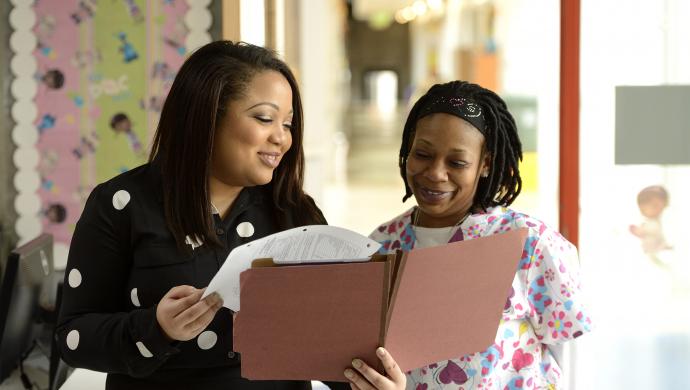
Photo by Will Kirk
Kelly grew up a few blocks from the Johns Hopkins School of Nursing, and now lives a few minutes and a world away in Baltimore’s Canton neighborhood. But most days you’ll find her in East Baltimore again, on Johns Hopkins Hospital’s Nelson 4 unit working in pulmonary care and infectious diseases. Or she’ll be in the Behavioral Health Leadership Institute van near the city jail that helps ex-inmates stay free—of drugs and incarceration. Both jobs help Kelly satisfy a fascination with infectious diseases, especially HIV, something she saw too much of growing up.
It’s “a 360-degree difference” from her work right after graduation at the health suite at Henderson-Hopkins School, a K-8 community partnership in East Baltimore. There, Kelly interacted with students and parents, affecting a healthful change through the community. All of her experiences have broadened Kelly’s scope, pushing her toward research and, she hopes, a PhD.
Mentor Phyllis Sharps, PhD, RN, FAAN, says Baltimore is lucky to have its hooks in Kelly. “The benefit of having someone who’s from this city, who understands and wants to work in Baltimore, is fabulous,” says Sharps, associate dean for Community and Global Programs. “If we can multiply Brittany a thousand times through scholarships, we’ll be doing a great thing.”
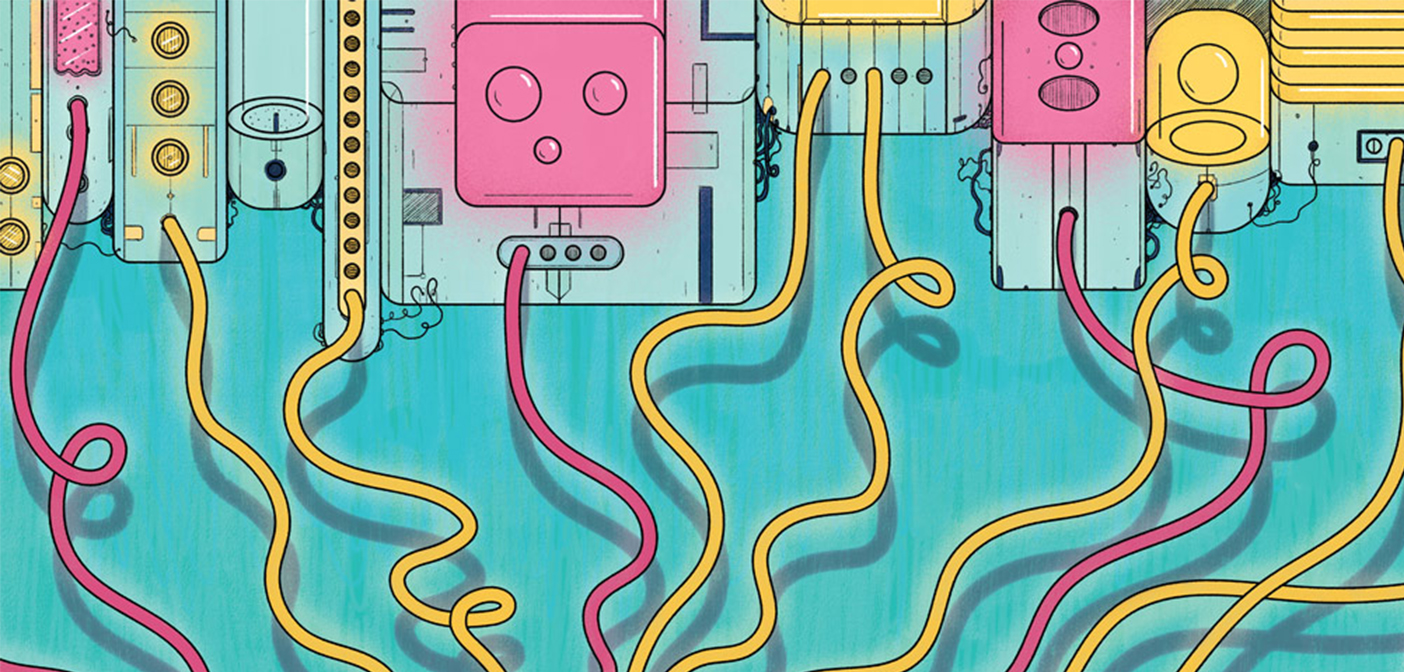
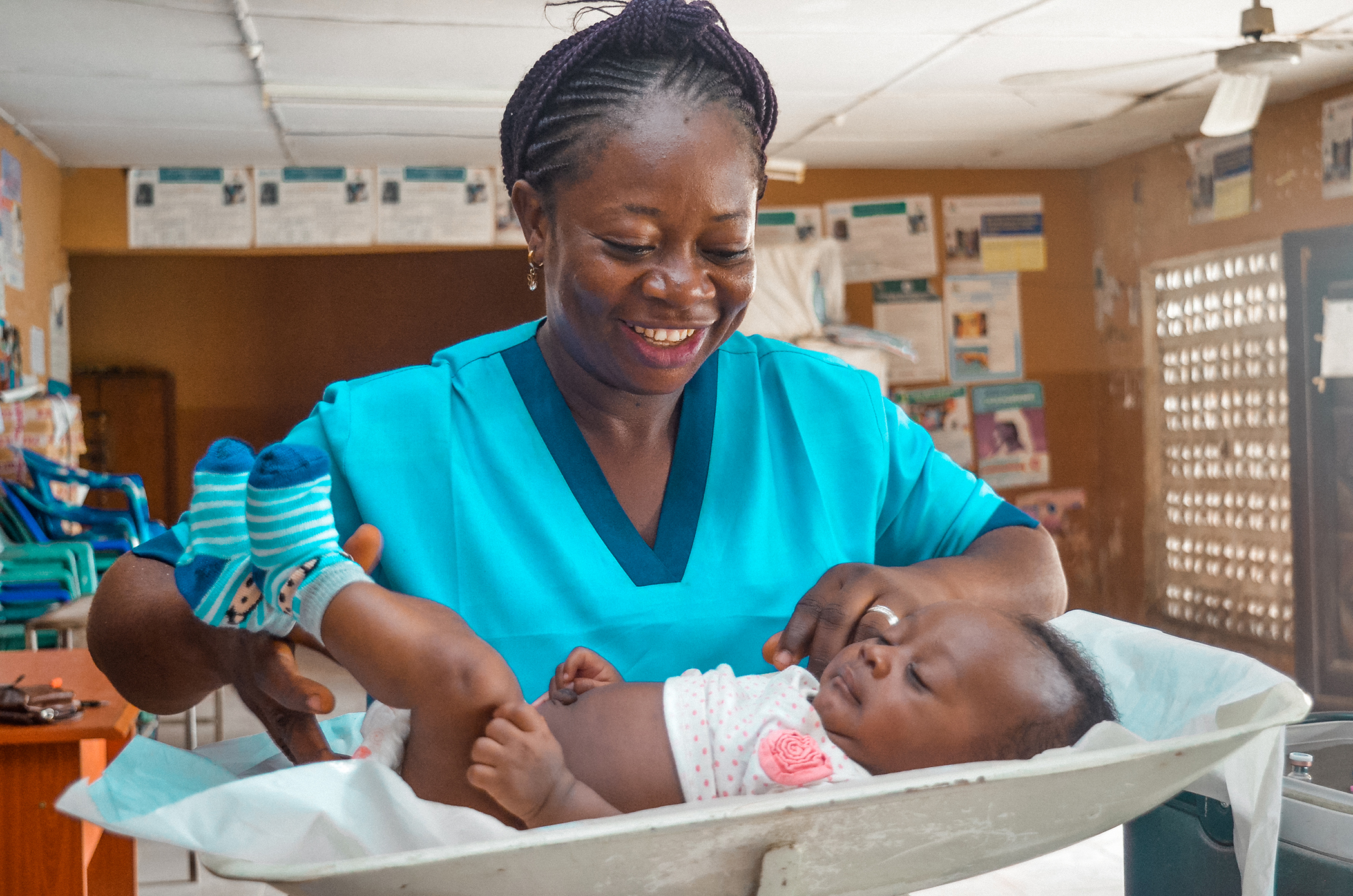 Nurse Edith Brings Primary Health Care to Everyone in Rural Nigeria
Nurse Edith Brings Primary Health Care to Everyone in Rural Nigeria Growing CAPABLE
Growing CAPABLE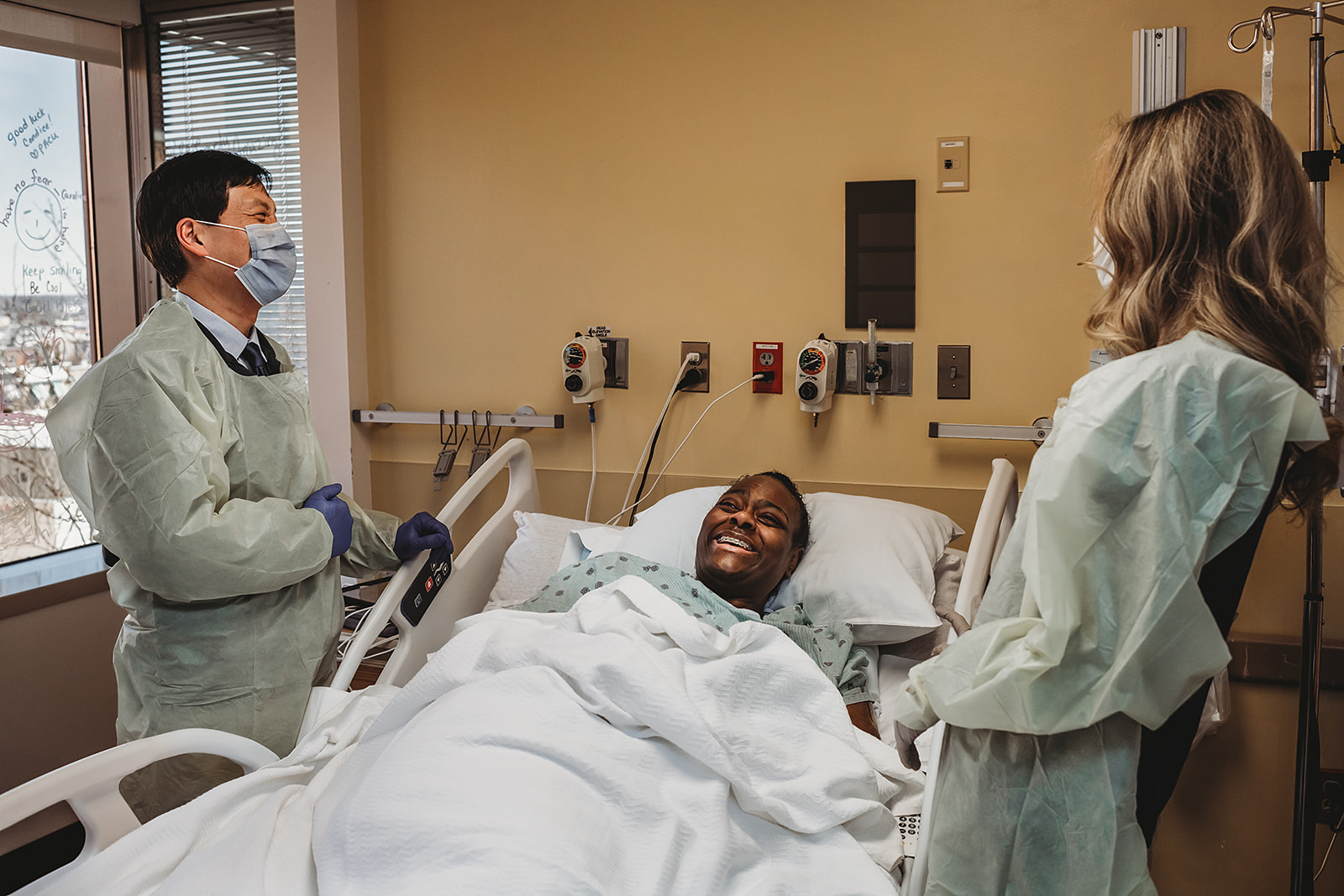 ‘Helpful, Powerful, Kind’ Palliative Care
‘Helpful, Powerful, Kind’ Palliative Care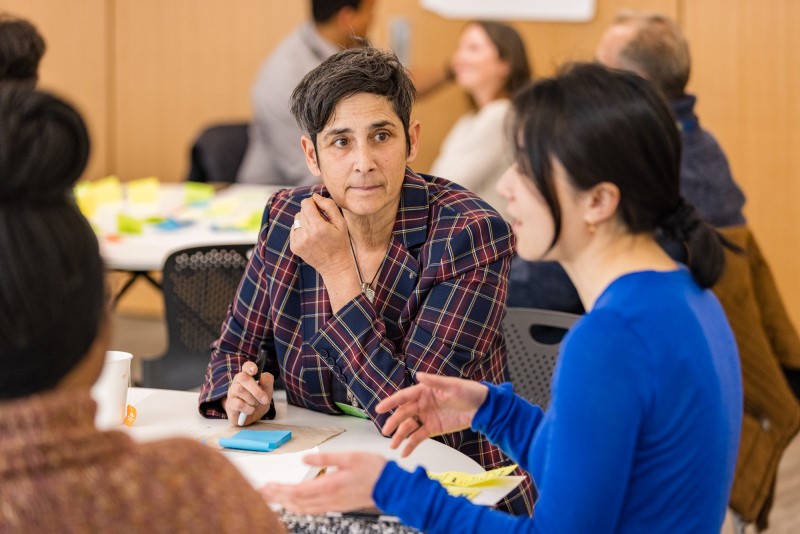 For Neighborhood Nursing, a Known Commodity
For Neighborhood Nursing, a Known Commodity To Sleep, Perchance to Live Better
To Sleep, Perchance to Live Better







